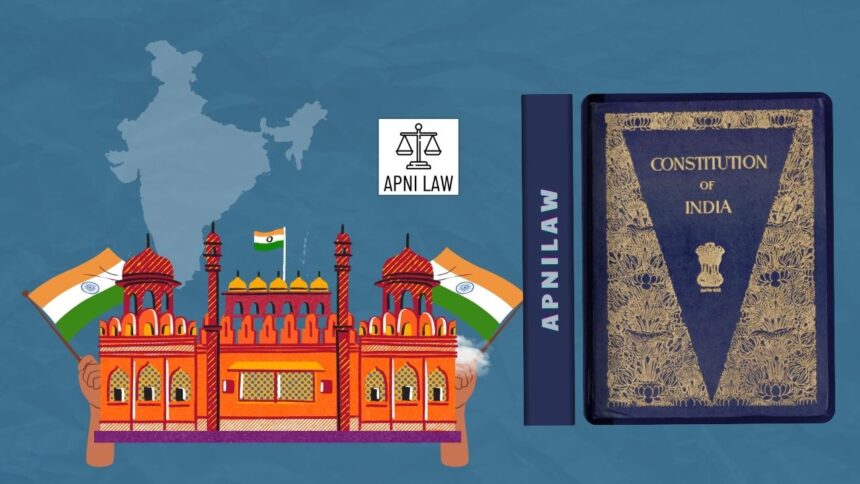What Is the Guillotine in the Indian Budget Process?
In India’s parliamentary system, the term “guillotine” refers to a special procedure used to speed up the passage of the Union Budget. The Lok Sabha applies the guillotine when there is not enough time to discuss every Demand for Grant from different ministries and departments. The word “guillotine,” originally meaning a cutting device, symbolizes the sudden conclusion of debates in the legislature. In the context of the budget, it means putting all pending Demands for Grants to vote at once, without further discussion.
This method is not unique to India, but it plays a critical role in ensuring the smooth functioning of the government. Without the guillotine, the annual financial process could be delayed, leading to administrative and economic disruptions.
How Does the Guillotine Work During the Budget Session?
The Parliament goes into a recess of about three weeks. During this period, the Departmentally Related Standing Committees of Parliament examine the Demands for Grants of various ministries. These committees scrutinize departmental budgets in detail and submit reports with recommendations.
When Parliament reconvenes, the Business Advisory Committee (BAC) of the Lok Sabha allocates time for debates on Demands for Grants. However, given the large number of ministries and limited session days, not all demands can be discussed individually. Usually, only a few key ministries—such as Defence, Railways, Agriculture, or Health—get detailed discussions. The rest are left pending due to time constraints.
On the last day fixed for the budget discussion, the Speaker of the Lok Sabha applies the guillotine. At this point, all outstanding Demands for Grants are grouped together and put to vote simultaneously. Members do not debate these remaining items; instead, they are passed en masse. Once this voting is completed, the Appropriation Bill and the Finance Bill are introduced and passed to give legal effect to the budget.
Why Is the Guillotine Used in India’s Parliamentary Budget Process?
The guillotine procedure serves a practical purpose. India’s Parliament handles hundreds of Demands for Grants each financial year, and it is nearly impossible to examine each in depth. The guillotine ensures that the budget is passed before March 31, the end of the financial year. Without this, government departments would lack the authority to spend money, leading to a shutdown of essential services.
By applying the guillotine, the government ensures fiscal discipline and continuity of operations. It prevents procedural delays and ensures that administrative expenditure and development projects continue smoothly from the start of the next financial year. The process reflects a balance between efficiency and parliamentary control, although it often leans more toward efficiency.
What Happens After the Guillotine Is Applied?
Once the guillotine is applied, all remaining Demands for Grants are voted upon without any discussion. This is followed by the passing of the Appropriation Bill, which authorizes the government to withdraw funds from the Consolidated Fund of India for the approved expenditure. Then, the Finance Bill, which contains taxation proposals, is taken up for consideration and passage.
Together, these steps complete the budget process in Parliament. The use of the guillotine allows the government to meet constitutional deadlines while ensuring that all financial proposals get parliamentary approval, even if some are passed without debate.
What Are the Advantages of the Guillotine Process?
The biggest advantage of the guillotine is that it ensures timely passage of the budget. Without it, the government could face uncertainty in financial management, which might disrupt public administration. The process prevents political stalling and ensures that the opposition cannot indefinitely delay financial business.
It also allows Parliament to focus its limited time on the most crucial ministries or sectors. This selective discussion gives members a chance to highlight pressing issues while still allowing the overall budget to move forward efficiently.
Moreover, the guillotine reflects the practical need to balance comprehensive scrutiny with time-bound governance. Given the vast scope of government expenditure, detailed debate on every item is simply not feasible.
What Are the Drawbacks of the Guillotine Procedure?
Despite its efficiency, the guillotine is often criticized for reducing parliamentary scrutiny. Many ministries’ Demands for Grants pass without any discussion. This lack of debate can mean that important spending proposals escape proper examination, potentially affecting transparency and accountability.
Critics argue that the guillotine weakens the legislature’s role in controlling the executive. Parliament’s constitutional power of the purse, the ability to review and approve government spending, gets diluted when significant financial items pass automatically. This has led to demands for reforms to make the process more accountable without compromising on efficiency.
How Does the Guillotine Reflect India’s Democratic Balance?
The guillotine symbolizes the tension between democratic deliberation and administrative efficiency. In theory, every rupee spent by the government must receive parliamentary approval after debate. In practice, however, the time-bound nature of the budget session makes this impossible. The guillotine ensures that the government continues functioning while acknowledging Parliament’s ultimate authority to approve expenditure.
This mechanism demonstrates the Indian Parliament’s adaptation to practical constraints. While it may limit discussion, it upholds the constitutional requirement that no money shall be withdrawn from the Consolidated Fund without legislative approval.
Has the Guillotine Been Criticized or Reformed?
Over the years, political commentators and parliamentary committees have expressed concerns about the overuse of the guillotine. Many suggest that Parliament should extend the time allocated for budget discussions or enhance the role of Standing Committees to ensure greater scrutiny.
Some experts propose digital reforms and pre-budget consultations to involve members more effectively. Others recommend a more flexible schedule, allowing debates on additional ministries depending on national priorities. Despite these suggestions, the guillotine remains a regular feature of India’s budgetary process, as it ensures adherence to fiscal timelines.
How Does India’s Guillotine Compare with Other Parliamentary Systems?
India’s guillotine procedure draws inspiration from practices in the British Parliament, where similar time-limiting motions help complete legislative business. In the United Kingdom, the House of Commons applies a “closure motion” or “allocation of time order” to end prolonged debates and force a vote. India adapted this method to fit its own parliamentary structure and financial rules.
Many Commonwealth countries use similar mechanisms to prevent legislative deadlock, particularly during budget sessions. The key difference lies in the extent of parliamentary control and the political culture that surrounds financial legislation.
Why Is the Guillotine Still Relevant Today?
In an era of coalition politics and complex fiscal challenges, the guillotine remains relevant because it safeguards the continuity of governance. The government must ensure that funds are available for development programs, defense, welfare schemes, and infrastructure projects. Any delay in passing the budget could disrupt these essential services.
The guillotine also helps maintain economic stability. Investors, industries, and state governments rely on timely passage of the Union Budget for planning and coordination. Thus, the guillotine indirectly supports fiscal predictability and policy continuity.
Can the Guillotine Be Made More Transparent?
Improving transparency within the guillotine system is possible. One approach is to strengthen the pre-budget examination done by Standing Committees. Another is to ensure that the reports of these committees are discussed more thoroughly in Parliament. The use of digital dashboards and public access to budget data can also make the process more open.
If Parliament ensures that committees conduct robust scrutiny and make their findings public, the guillotine will be less controversial. Transparency and accountability can coexist with efficiency if Parliament modernizes its procedures.
Conclusion
The guillotine in India’s budget process represents a crucial balance between speed and scrutiny. It allows the government to pass the Union Budget on time, ensuring financial continuity and economic stability. Yet, it also limits debate on many expenditure items, raising concerns about accountability.
While critics view it as a compromise on democratic deliberation, supporters see it as an administrative necessity. The challenge lies in strengthening parliamentary committees, improving transparency, and using modern tools to enhance financial oversight.
Ultimately, the guillotine highlights the evolving nature of India’s parliamentary democracy, where efficiency and accountability must coexist to keep governance effective and responsive.








